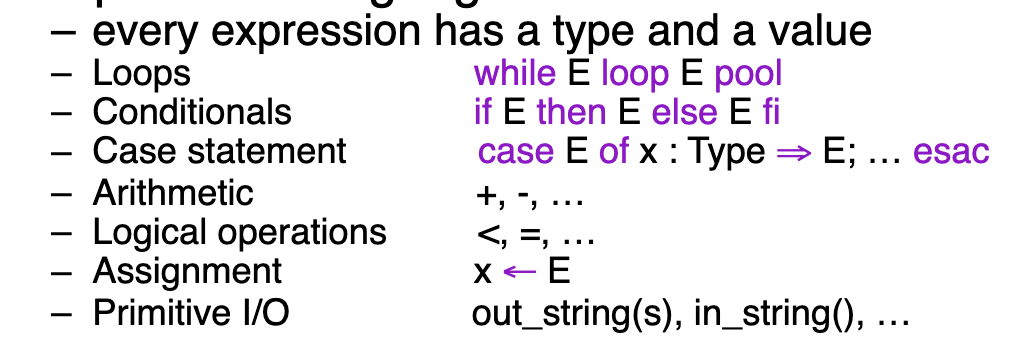how to design a language: “why don’t we just make a truing machine?” tl;dr: “writing code in a Turing Machine takes a while, writing it in C++ takes a little less while.”
- languages fills a void: makes something previously difficult/impossible easy
- good languages vs. language design needs are orthogonal things
why do we not change languages?
- rewriting code is hard
- languages with many users are replaced rarely — popular languages are ossified
- so people just go start new niches
language vs. ends
- SQL: query optimizations by separating data query vs. access pattern (inserting indexes w/o rewrite code)
- Python: library composition / FFI
- Haskell: proofs and type safety
- Rust: security
language design
- no universally accepted metrics for design
- claim: “a good language is the one that people use” (“I don’t really buy that, because otherwise PHP would be the best language” - Fred 2025)
abstraction
abstraction — detaching high level problems from functional details, “selective ignorance”.
- key is information hiding: expose only the essential things
- leave high level properties
To create abstractions, we…
- use languages and compilers: create high level code with few dependencies specific to machines
- use functions: allows users to create interfaces to behavior
- use modules: export interfaces and hide implementations
- use classes / ADTs: bundle data with its operations
some good ideas
types
“types is used to enforce abstractions”
- FORTRAN: scalars, arrays, and that’s it
- LISP: no static type distinctions
insight: types are helpful!
- they let you express and enforce your own abstractions
- they let the compiler report frequent errors
- …up to complete safety (Java, Haskell, Lean, etc.)
- helps guide optimization
reuse
Exploit common platter in software systems (to get mass-produced components and reuse).
- type parameterizations: (List[int], List[double])
- classes and inheritance: derived classes
- C++ and Java has both!
During class derivations, good approaches mostly emit the code multiple times for each specialization. Inheritance allows:
- specialization of existing abstraction
- extension, modification, hidden behavior, etc.
COOL
We will implement COOL in this class; written by Alex in the 90s.
- abstraction
- static typing
- inheritance
- strict object orientation (everything is in a class)
- memory management (with GC (oh no)!)
- light metaprograming
A Tour
class Point {
x : Int <- 0;
y : Int <- 0;
};
Inside class Main, there’s a special method main. All COOL code lives inside this evaluation.
- class = {attributes, methods}
- instances of classes are objects
class Point {
x : Int < - 0;
y : Int; (* could have default values *)
};
Objects are thought of as records
digraph {
graph [bgcolor=transparent];
node [fontcolor=white, color=white, shape=none];
edge [fontcolor=white, color=white];
a [label="{{x|y} | {0|0}}", shape="record"];
}
classes
Classes can only contain features = {attributes, methods}. Here’s a class both types of features:
class Point {
x : Int <- 0;
y : Int <- 0;
movePoint(newx : Int, newy : Int) : Point {
{
x <- newx;
y <- newy;
self;
} --- this is a block
};
};
Cool, therefore, is a an expression based language (a la Rust).
Key: one block per expression; notice how we had to surround the block in additinal curlies.
Some facts:
- shadowing is allowed
- methods are all GLOBAL/PUBLIC
- attributes are all LOCAL/PRIVATE (make getters)
- all attributes of a class are visible to all methods of that class (just use the name)
allocation
When we have a method, we put in the field a pointer to the actual function.
digraph {
graph [bgcolor=transparent];
node [fontcolor=white, color=white, shape=none];
edge [fontcolor=white, color=white];
obj [label="{{x|y| }|{0|0|<here>*}}", shape="record"];
obj:here:e -> movePoint;
}
As an optimization, if multiple instances exist, we create a method table or a vtable which points to all methods.
digraph {
graph [bgcolor=transparent];
node [fontcolor=white, color=white, shape=none];
edge [fontcolor=white, color=white];
obj [label="{{x|y| }|{0|0|<here>*}}", shape="record"];
methods [label="{methods|*}", shape="record"]
obj:here:e -> methods:e -> movePoint;
}
inheritance
class ColorPoint inherits Point {
color : Int <- 0;
movePoint(newx : Int, newy : Int): Point {{
color <- 0;
x <- newx;
y <- newy;
self;
}};
};
notice how movePoint still returns a Point because we don’t have multiple dispatch.
types
Every class is a type.
- base classes: Int, Bool, String, Object (root of the hierachy)
- everything must be declared (the complier infers types)
type checking
x : A;
x <- new B:
is well typed if A is an ancestor of B.
invocation
Consider:
p : Point;
p <- new ColorPoint;
...
p.movePoint(1,2); -- this should invoke the ColorPoint version
So, consider:
e.m(a)
the evaluation semantics:
- evaluate arguments
a - evaluate
e, the receiver - find the class of
e - find code of
m(to jump through the method table to the methods ofeto findm) — we have to do this dynamically because we don’t know (see example above) whether this is a point or color point or whatever - bind
selfand arguments (such asa, the formal parameter, to the actual parameter, x) - jump and run the actual method
expression language, so

we don’t have…
- arrays
- floats
- exceptions
